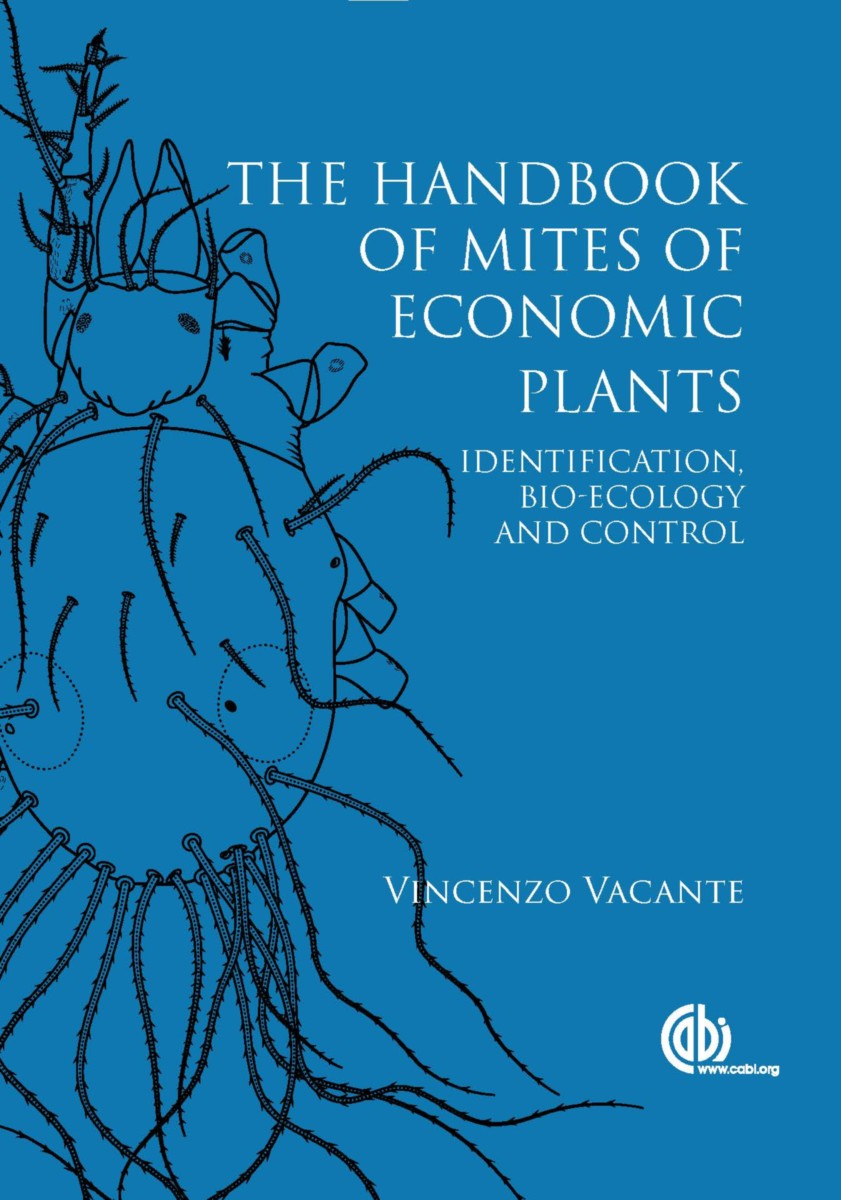Handbook of Mites of Economic Plants
Identification, Bio-ecology and Control
- Publisher
CABI - Published
10th February 2016 - ISBN 9781845939946
- Language English
- Pages 832 pp.
- Size 8.625" x 11"
Mites pose a serious problem to plants worldwide, attacking crops and spreading disease. When mites damage crops of economic importance the impacts can be felt globally. Mites are among the most diverse and successful of invertebrates, with over 45,000 described species, with many more thousands to be discovered. They are responsible for a significant portion of the losses of crops for food, fiber, industry and other purposes, and require expensive and often controversial pest control measures. Understanding these mites is vital for entomologists, pest researchers, agronomists and food producers.
Knowledge of mite pests helps to inform control strategies and optimize the production of economic plants and the agrarian economy. This handbook provides thorough coverage of the mites and the problems they cause to crops, yet it is easily searchable, organized by mite species and subdivided into helpful headings. It takes a worldwide view of the issue of mites injurious to economic plants, describing mites prevalent in different regions and discussing control methods appropriate in different environments.
This book provides an encyclopedic reference to the major mites, described by family in terms of their internal and external morphology, bio-ecology and family systematics. Methods of mite collection and laboratory study is described, as well as species diagnostic characteristics, worldwide distribution, host plants, identification by the type of damage they cause and control strategies, including chemical and biological intervention and integrated pest management measures. Mites of the following families are included: Eriophyoidea, Tarsonemidae, Tuckerellidae, Tenuipalpidae, Tetranychidae, Acaridae, Penthaleidae.
The Handbook of Mites of Economic Plants is an important resource for students of entomology and crop production, and as a thorough reference guide for researchers and field workers involved with mites, crop damage and food production.
“A precious work from an acarological point of view. Dr. Vacante has put together the best world literature on Eriophyids of economical importance....He is to be highly praised for it.”
Carlos H.W. Flechtmann - , Universidade de São Paulo – ESALQ, Brazil
PART I. INTRODUCTION
1. Introduction to the Acari
2. External Morphology
3. Internal Morphology
4. Biology
5. Ecology
6. Collecting and Detecting, Preserving, Preparing and Rearing
7. Mites and Plant Damage
8. Mites as Biocontrol Agents of Weeds
9. Control
10. Brief History of the Main Published Works on the Mites of Economic Plants
11. Classification of and Key for the Identification of Major Taxa
PART II: MITES INJURIOUS TO ECONOMIC PLANTS
12. The Family Histiostomatidae Berlese
13. The Family Acaridae Latreille
14. The Family Erythraeidae Robineau-Desvoidy
15. The Family Penthaleidae Oudemans
16. The Family Eriophyidae Nalepa
17. The Family Phytoptidae Murray
18. The Family Diptilomiopidae Keifer
19. The Family Tuckerellidae Baker et Pritchard
20. The Family Tetranychidae Donnadieu
21. The Family Tenuipalpidae Berlese
22. The Family Tarsonemidae Canestrini et Fanzago
23. Minor Families
Vincenzo Vacante
Prof. Vincenzo Vacante has an academic degree in Biological Sciences and his last academic position was full Professor of General and Applied Entomology at the Agrarian University of the Mediterranean University of Reggio Calabria, Italy.


